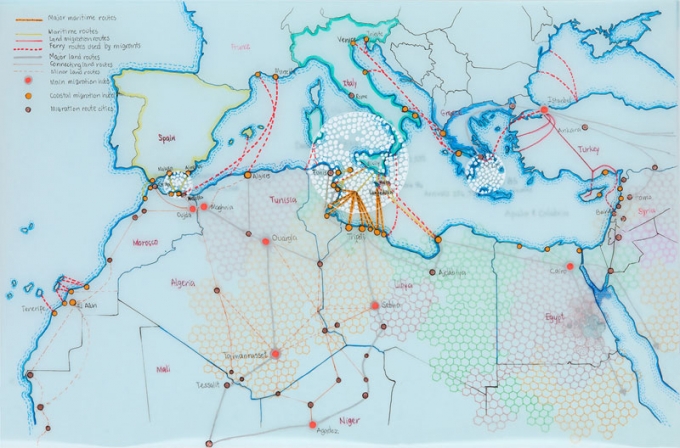
Flows of illegalised border crossings are visualised with maps by Western governments. The maps render people on the move as invaders which shapes public discourse and justifies harsh migration policies of exclusion [Van Houtum, 2012]. Cartography is, in this instance, used to support a repressive power that deprives people of fundamental rights and citizenship. Simultaneously, several artists have created maps which interrupt hegemonic cartography’s iconography and representation of people on the move; it is an emergent field of artistic counter-cartographies. By presenting migrant journeys with the tool that shaped nations and notions of citizenship, any map of people on the move participates in the ongoing negotiation of access to fundamental rights, citizenship, and/or legal protection.
The proposed research aims to investigate how counter-maps of people on the move produce images of communities with equal access to fundamental rights, raise political awareness of inclusivity, and promote civil engagement [Van Gelder, 2021]. I will revise the notion of cartography as a tool of the powerful to show how counter-maps perform the histories of those cartography has been used to render weak and subaltern.Therefore, I ask how we can recognise the latent power in artistic counter-maps to present people on the move as worthy of fundamental rights by investigating the potential histories these images perform against the grain of hegemonic cartography.
